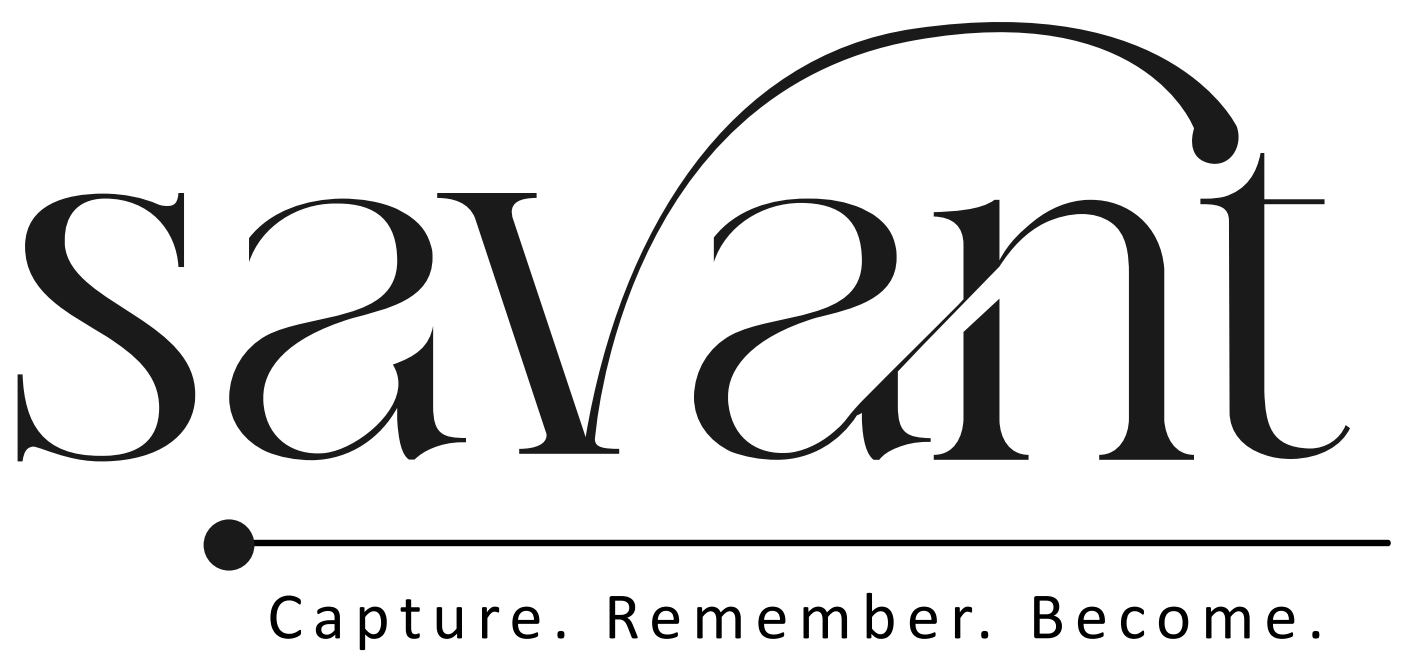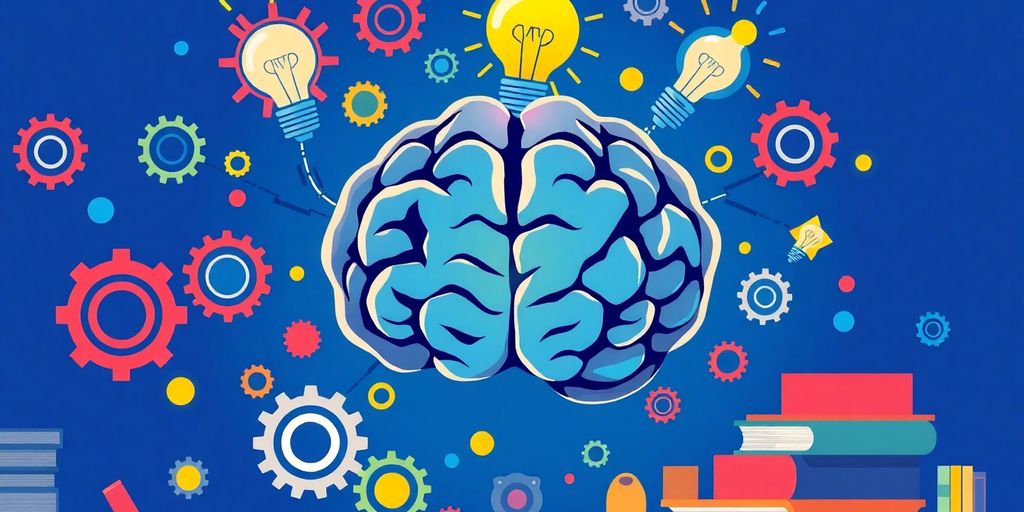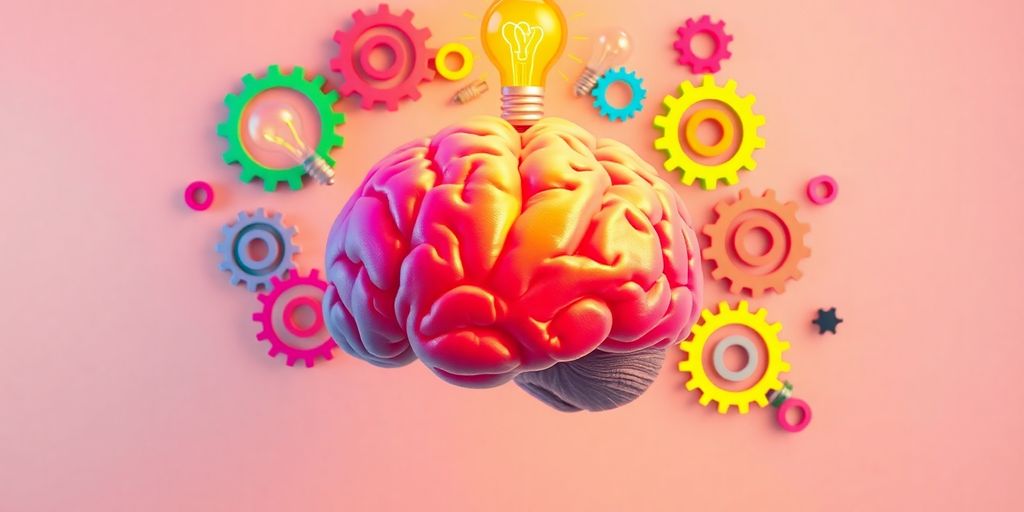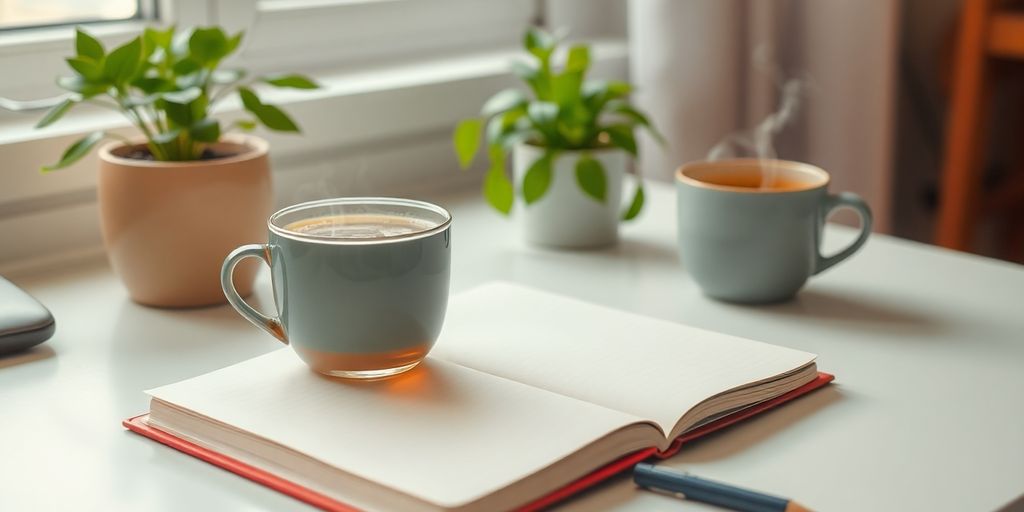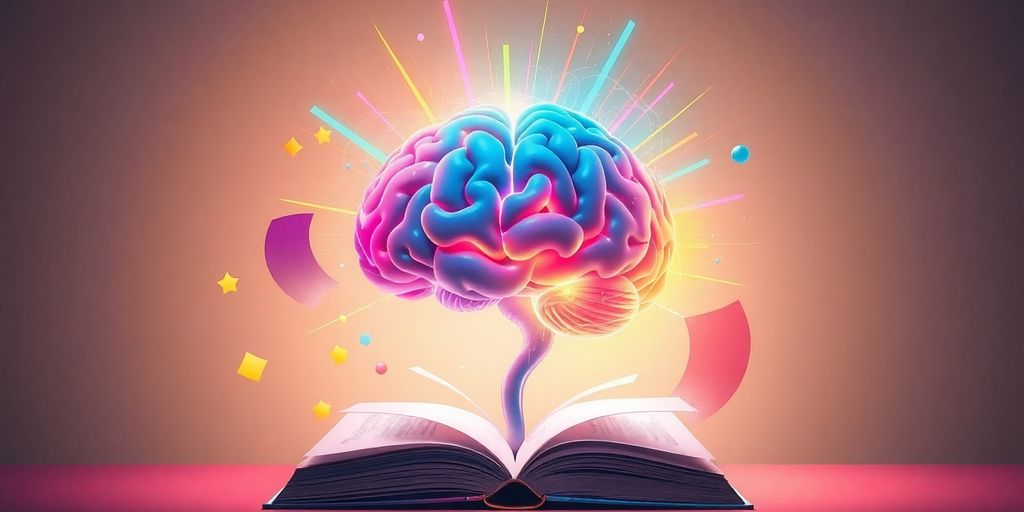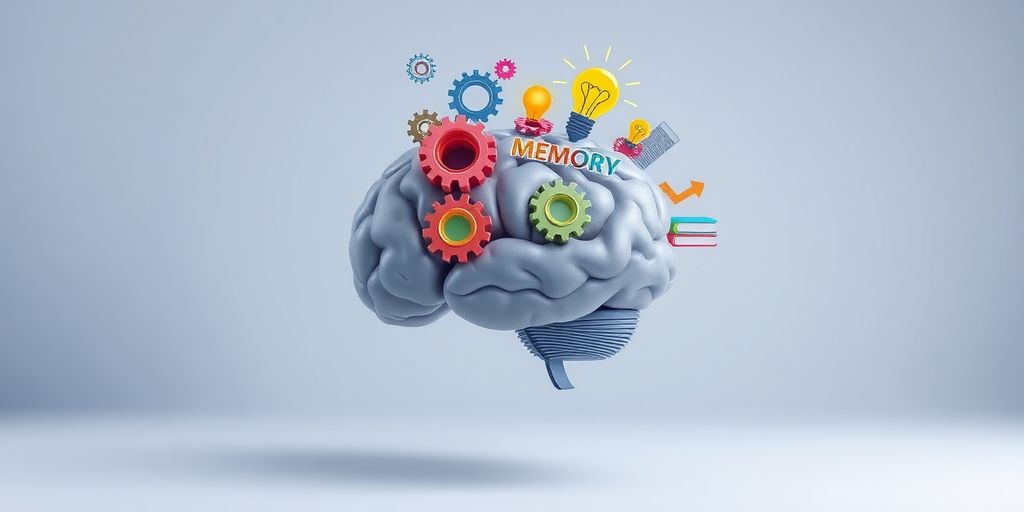Ever had a test coming up and felt like your brain just couldn’t hold any more info? You’re not alone. Memorizing stuff for exams can seem like an uphill battle, but it doesn’t have to be. With the right tricks and techniques, you can boost your memory power and recall information more effectively. Let’s dive into some cool strategies to help you ace that test!
Key Takeaways
- Understanding how memory works can help you memorize better.
- Visualization techniques can make recalling information easier.
- Active engagement and practice are crucial for effective memorization.
- Using mnemonics and chunking can simplify complex information.
- Balancing study sessions with sleep and mindfulness improves memory retention.
Understanding the Science of Memory

The Process of Encoding Information
Alright, let’s break down how we actually remember stuff. It all starts with encoding. This is the phase where we take in information, like when you learn a new fact or see a picture. Think of it as your brain’s way of hitting the "record" button. This can happen through different channels—visual, auditory, or even emotional. It’s like your brain is a sponge, soaking up all these details.
How Storage Works in the Brain
Once we’ve encoded information, it needs a place to hang out until we need it. That’s where storage comes in. Your brain has two main storage systems: short-term and long-term. Short-term memory is like a sticky note—holding info for a brief period, usually just seconds. Long-term memory, on the other hand, is more like a filing cabinet, where information can stay indefinitely. It’s fascinating how our brains decide what to keep and what to toss, isn’t it?
Retrieving Memories Effectively
Now, onto retrieval, which is just a fancy way of saying "remembering." This is when you pull out that stored info, like recalling a friend’s birthday or a historical date. Effective retrieval is about having strong connections between pieces of information. It’s like having a well-marked trail in a forest that leads you directly to the memory you need. Sometimes, you might need a cue or prompt to jog your memory, which is why creating strong associations during the encoding phase is so important.
Understanding these stages—encoding, storage, and retrieval—can really help you get a grip on how memory works and how you can improve it. It’s not just about memorizing random facts; it’s about creating and strengthening the pathways in your brain.
By getting familiar with these processes, you’re setting yourself up for better memory retention and recall. It’s a bit like training a muscle—the more you know about how it works, the better you can make it perform. So next time you’re studying, think about how you’re encoding the info, where it’s getting stored, and how you’ll retrieve it later. Happy memorizing!
Visualization Techniques for Better Recall
Creating Mental Images
Ever tried to remember something by picturing it in your mind? That’s the magic of creating mental images. Our brains are wired to remember images more easily than words. Visualizing information helps us tap into our natural ability to recall images. For example, if you need to memorize that the capital of Louisiana is Baton Rouge, you might imagine a girl named Louise holding a bright red baton. This simple image can make the information stick in your mind. The more senses you involve—like imagining the feel or sound of the baton—the more vivid and memorable it becomes.
Using the Memory Palace Method
The memory palace technique is like taking a mental walk through a familiar place, like your home. Imagine placing the things you need to remember in different spots around this place. For instance, picture a carton of eggs on the kitchen counter or a loaf of bread on the living room sofa. This method is especially useful for remembering lists or unrelated items. Once you get the hang of it, it becomes a fun and effective way to store and retrieve information.
Linking Stories for Memory Enhancement
Linking stories is a playful way to remember things. Imagine creating a crazy narrative that connects one piece of information to the next. The more outlandish the story, the better it sticks. If you need to remember a sequence of events or a list, turn them into a story. For example, if you’re memorizing a grocery list, you might picture a banana dancing with a can of beans, which then rolls into a loaf of bread. These silly stories make the information "sticky" and easier to recall.
Visualization isn’t just about seeing things in your mind’s eye—it’s about making connections that turn abstract concepts into something tangible and memorable. Whether you’re using mental images, a memory palace, or linking stories, these techniques can transform the way you remember things. Give them a try, and you might find studying becomes a lot more enjoyable and effective.
Active Engagement and Practice
The Power of Self-Testing
Self-testing is like having a conversation with your brain. You challenge yourself to remember what you’ve learned, rather than just passively reading over notes. Active recall is a key component here, where you actively engage with the material by asking yourself questions and trying to retrieve information from memory. This technique has been shown to improve retention and understanding significantly. So, grab some flashcards or try a transformative learning technique to really get the most out of your study sessions.
Benefits of Writing It Out
Writing things down isn’t just for the sake of having notes. The act of writing helps to encode the information in your brain. When you write, you process the information more deeply, which can lead to better memory retention. It’s like telling your brain, "Hey, this is important!" Whether it’s jotting down key points or summarizing a topic in your own words, writing can be a powerful tool for internalizing information.
Talking to Yourself as a Memory Tool
It might sound a bit odd, but talking to yourself can actually help with memorization. When you verbalize information, you’re engaging different parts of your brain. This can make the information stick better. Try explaining a concept out loud as if you’re teaching someone else. This method forces you to think about the material in a new way, which can enhance understanding and recall.
Sometimes, the best way to learn is to step outside your comfort zone. Self-testing, writing, and talking might seem unconventional, but they can transform how you memorize and understand information. Don’t be afraid to try these methods and see what works best for you.
Leveraging Mnemonics and Chunking
Creating Acronyms and Rhymes
Ever heard of "Please Excuse My Dear Aunt Sally" to remember the order of operations in math? That’s an example of using acronyms and rhymes to make information stick. Mnemonics are like little tricks that make learning fun and memorable. By turning the first letters of a list into a catchy phrase or a rhyme, you can transform complex info into something you won’t easily forget. It’s like giving your brain a catchy tune to hum when you need to recall something important.
Chunking Information for Easier Recall
Chunking is all about breaking down big chunks of information into smaller, more manageable pieces. Think of it like cutting a big pizza into slices. Your brain can handle these smaller bits much better than trying to swallow the whole pizza at once. This technique is especially handy when you’re dealing with numbers, like phone numbers. Instead of trying to remember a long string of numbers, you break it into smaller groups, making it much easier to recall.
Using Mnemonic Devices Effectively
Mnemonic devices can be your best friend when it comes to memorizing tricky stuff. These devices use associations, like linking a new piece of information with something you already know. For example, if you’re trying to remember a list of plants like garlic, rose, hawthorn, and mustard, you might create a word like GRHM and picture a graham cracker. This way, you only need to remember the image of a graham cracker, and the rest follows. It’s like turning your brain into a well-organized filing cabinet, where everything has its place and is easy to find.
Mnemonics and chunking are not just for students. They’re for anyone who wants to remember things better, whether it’s for a test, a presentation, or just everyday life. By using these strategies, you can make learning less daunting and more engaging.
The Role of Sleep and Mindfulness in Memorization
How Sleep Affects Memory Retention
Ever notice how pulling an all-nighter never seems to help before a big test? That’s because sleep is like a secret weapon for your brain. During sleep, your brain organizes and stores all the stuff you learned while you were awake. It’s like hitting the save button on a document. If you skip sleep, you’re basically risking losing all that valuable data. So, aim for a good night’s sleep to give your brain the chance to cement those memories.
Mindfulness Practices for Better Focus
Mindfulness isn’t just about sitting quietly and breathing deeply—though that helps too. Practicing mindfulness can actually boost your memory and focus. When you’re calm and centered, it’s easier to absorb new information. Techniques like meditation or deep breathing can help reduce stress, which in turn improves your ability to remember things. It’s like giving your brain a little spa day!
Balancing Study and Rest
Finding the right balance between studying and resting is key. Here’s a quick guide:
- Study in chunks: Don’t cram. Break your study sessions into manageable pieces.
- Take breaks: Short breaks during study sessions can help refresh your brain.
- Get enough sleep: Make sure you’re hitting those 7-9 hours of sleep.
Remember, it’s not just about how much you study, but how effectively you balance your study time with rest. Your brain needs downtime to process and store information, so don’t skimp on sleep!
Spaced Repetition and Interleaving
Understanding Spaced Repetition
Spaced repetition is a technique where you review information at spaced intervals, which helps reinforce what you’ve learned just before you forget it. This method is based on the idea that our brains are more likely to remember information if it’s revisited periodically rather than crammed in one go. Imagine it like watering a plant regularly to keep it healthy, instead of drowning it all at once. This technique is super effective for long-term retention.
Here’s a simple way to apply spaced repetition:
- Identify what you need to memorize.
- Schedule review sessions at increasing intervals (e.g., after one day, then three days, then a week).
- Adjust your schedule based on how well you remember the material.
Interleaving Different Subjects
Interleaving involves mixing different subjects or types of problems during study sessions. Unlike traditional learning where you might focus on one topic for a long stretch, interleaving encourages switching between different topics. This might feel a bit chaotic at first, but it actually helps your brain make connections and improves problem-solving skills.
Think of it like cross-training for your brain, where you’re working different mental muscles. For example, study a bit of math, then switch to history, and follow it up with some vocabulary practice. This approach can make learning more engaging and less monotonous.
Timing Your Study Sessions
Timing plays a crucial role in both spaced repetition and interleaving. You want to find that sweet spot where you’re not reviewing too soon or too late. Timing is about balance — enough time to almost forget, but not completely. This way, when you revisit the material, you’re reinforcing those neural pathways.
Here’s a quick tip: Use a calendar or app to remind you when to review each topic. This helps keep you on track and ensures you’re not just winging it.
It’s like juggling multiple balls; at first, it seems impossible, but with practice, you get better and better. The key is consistency and making sure each ball gets its time in the air.
Building a Personalized Memorization Strategy

Identifying Your Learning Style
Understanding your unique learning style is a game-changer for boosting memory. Are you a visual learner who thrives on images and diagrams, or do you learn best through listening and speaking? Maybe hands-on, physical activities help you remember better. Pinpointing your learning style allows you to choose techniques that fit you like a glove, making studying less of a chore and way more effective.
Experimenting with Different Techniques
Once you’ve got a grip on your learning style, it’s time to test out various methods. Try out chunking, where you break information into bite-sized pieces, or mix it up with mnemonic devices like acronyms and rhymes. Don’t be afraid to get creative; sometimes the wackiest techniques stick the best! Keep track of what clicks and what doesn’t, and remember, practice makes perfect.
Tracking Your Progress and Adjusting
Keep tabs on how well your strategies are working. Are you remembering things more easily, or do you need to tweak your approach? Jot down what’s working and what’s not in a simple notebook or digital app. This way, you can adjust your methods and keep moving forward. Remember, consistency is key, and small tweaks can lead to big improvements over time.
Building a memorization strategy is like crafting a recipe. You mix, taste, and adjust until you find the perfect blend that works for you. Stay patient and persistent, and you’ll find your sweet spot.
Conclusion
So there you have it, folks! Memorizing for tests doesn’t have to be a dreaded chore. With a little practice and the right techniques, you can turn it into a skill that feels almost second nature. Whether you’re using visualization, chunking, or just talking to yourself, the key is to find what clicks for you. And remember, it’s okay if it feels a bit awkward at first. Stick with it, and soon enough, you’ll be breezing through your study sessions. Happy memorizing!
Frequently Asked Questions
What is a memory palace and how does it help with memorization?
A memory palace is a technique where you visualize a familiar place and associate each item you want to remember with a specific location in that place. This makes recalling information easier because you can mentally walk through the palace and see each item in its spot.
Why is sleep important for memory?
Sleep helps your brain process and store information. When you sleep, your brain strengthens the connections between neurons, making it easier to remember what you’ve learned.
How can I use chunking to remember information?
Chunking is breaking down information into smaller, manageable parts. For example, instead of remembering a long number as a whole, you break it into sections like a phone number, making it easier to recall.
What are mnemonics and how do they work?
Mnemonics are memory aids that use patterns, such as acronyms or rhymes, to help you remember information. They work by creating associations that make the information more memorable.
What is spaced repetition and why is it effective?
Spaced repetition involves reviewing information at increasing intervals over time. This technique helps strengthen memory by allowing your brain to reinforce the information just before you forget it.
How does visualization improve memory recall?
Visualization involves creating mental images of the information you want to remember. This technique enhances memory by engaging the brain’s visual processing, making it easier to recall the information later.
